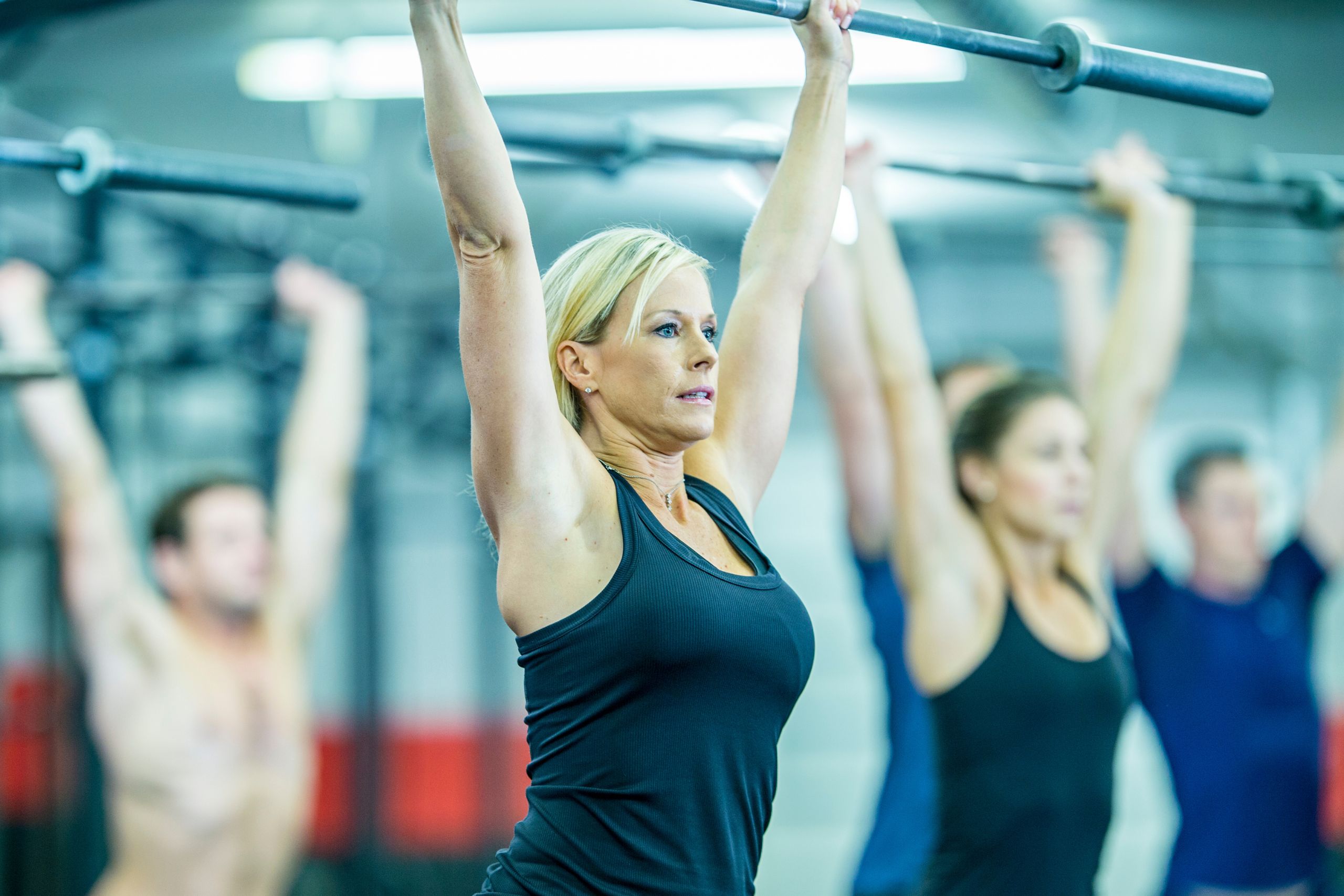Did you know that getting older doesn’t have to mean losing your balance? In fact, you can actually use strength training to improve balance!
When I was a little kid, I couldn’t think of anything worse than getting older.
In fact, it kind of terrified me.
While I think that reading Peter Pan just one too many times may have had something to do with it, it certainly wasn’t the only reason.
See, I was scared of leaving school and ‘growing up’ (whatever the hell that means, anyway?). I was scared of getting a job, and I was really scared of leaving home.
I mean, how would I survive?
And I was also weirdly scared of getting wrinkles, but that’s neither here nor there.
However, as I got a little older, I began to realize that it wasn’t all bad.
I mean, getting older meant I could get my license, see R rated movies, and you know, kind of do whatever I wanted without my Mum telling me off (or so I thought, anyway…).
Living the dream, right?
Not to mention the fact that getting older provided me with the means to find interests and passions, create a career, develop important relationships, and ultimately build an entire life.
All of which sound a whole lot better than high school if you ask me.
But age is a fickle mistress.

With all these amazing positives (of which there are also many more), she also brings some pretty hefty negatives.
See, advanced age can cause declines in physical function — of which none are more apparent than a decline in balance.
Now this loss of balance can lead to an increased risk of falls, a loss of independence, and finally, even a reduced quality of life.
Not good…
But here’s the big thing.
It doesn’t have to.
In fact, if you take the right steps, you can give age the middle finger and keep your function indefinitely.
And as the title of this article so aptly suggests, it all starts with strength training.
What is Balance?

Balance is an interesting term that is thrown around sooooo often — but what does it really mean?
Well, balance is often defined as “the ability to maintain stability during movement while weight is shifting, and when changing base of support”.
Or as I like to think of it — the ability to not fall over.\
Genius.
Now, balance is pretty damn important.
If your balance is poor, then your ability to navigate the word around you becomes limited. This means that you are not only going to be at an increased risk of falling over, but that performing any normal task of daily living will also become harder.
Why Does Your Balance Get Worse As You Get Older?
It is important to note that your balance can start to deteriorate due to several different factors.
If your eyesight gets worse, so will your balance. Similarly, balance can start to decline if your cognitive function and mental acuity begins to decrease.
But these aren’t typically the main driver.
In fact, the biggest factor for a loss of balance appears to be related to strength.
See, as you age, you tend to see a general decline in muscle mass. And this in turn causes an immediate and direct reduction in strength.
And this is where things start to go downhill.
See, the stronger you are, the more force you can produce. This means that you have more force available to control your movements. It also means that you have much better ability to absorb impacts and react to erratic and sudden movements.
In short, it means you have better balance.
For example, if you accidentally trip while walking up some stairs, you are going to be at an obvious risk of falling. However, if you have a high degree of strength, you can rapidly produce the force required to quickly put your foot down firmly on the ground.
Moreover, the rest of your body has the strength required to stabilize against thee force of you tumbling forward at the exact same time.
The result?
You don’t fall over.
But, if your strength is poor, then this doesn’t happen.
Instead, you try to move your foot into position to catch yourself, but you are too slow. You begin to stumble forward, and because you aren’t strong enough to stabilize the rest of your body, you tumble to the ground.
Not pretty…
Now here’s the worst part.
The vast majority of this loss of strength occurs because as we get older, we move less. Our jobs tend to become more sedentary, and our activity levels decline.
Essentially we no longer tell our body that it needs to keep strength and muscle mass.
So we lose it.
This causes a decline in balance, which can make movement and exercise more challenging.
We then avoid it even more.
You can see the problem here, right?
It becomes a truly vicious cycle…
Does Strength Training Improve Balance

With all this dark and gloomy information, it is important for me to say that this is not a death sentence.
In fact, all of this is very much reversible.
See, if a loss of strength is what contributes to a loss of balance, then increasing strength becomes the key to maintaining and improving it.
Simple.
And just to be clear, this isn’t a mere assumption.
There is a large body of evidence clearly demonstrating that strength training can have a massive impact on balance and on risk of falls.
More importantly, there is even some evidence to suggest that strength training may be even more effective than traditional ‘balance’ training (things like walking on unstable surfaces and standing on wobble boards) when it comes to improving balance.
Talk about the fountain of youth…
Now with all this in mind, I also need to address a common misconception.
People seem to think that as you get older it becomes impossible to get stronger and build any muscle mass.
They seem to think that after the age of 40, it literally becomes impossible.
Which is a complete and utter load of bull.
In fact, there is an incredible amount of research clearly proving that this misconception is just that — a misconception.
Strength training has been shown time and time again to help build muscle and increase strength in people who are well into their eighties.
So you are never to old too start.
Using Strength Training to Improve Balance

I hope by this point you have a pretty firm belief that strength training can help you improve your balance.
Now its time to outline how it can be best implemented with this goal in mind.
First things first, you want to focus on large compound exercises that use free weights (think dumbbells, barbells, and kettlebells) as their primary form of resistance. This means squats, deadlifts, lunges, presses, and rows. These movements not only recruit the most amount of muscle mass (which is perfect for increasing muscle size), but they also require the coordination of multiple joints at the same time.
As a result, they also improve your coordination, which is of obvious benefit to balance.
Secondly, you cant just “go through the motions“.
To build strength, you need to use what I like too describe as appreciable loads. This pretty much means weights that actually make you work hard.
Just to be clear, I am not saying that you need to be on your haunches in a pool of sweat at the end of your session — but the sets within your training session should not be easy.
Lastly, to optimize strength development, you need to train at least twice per week (and to be honest, three times is better).
This frequency is important, because it is what creates a demand for your body to grow new muscle tissue and devlop more strength.
It is this that essentially tells your body that it needs muscle and strength to survive — which is pretty important!
Strength Training to Improve Balance: The Perfect Program
Last thing I wanted to do was give you a simple program that you can implement 2-3 times per week to build strength and improve balance in the process.
| Exercise | Sets x Reps | Rest Period |
| Goblet Squat | 3 x 8 | 120s |
| Dumbbell Press | 3 x 10 | 120s |
| Kettlebell Deadlift | 4 x 6 | 120s |
| Single Arm Dumbbell Row | 3 x 10 / side | 60s / side |
| Split Squat | 3 x 8 / side | 60s / side |
| Pallof Press | 3 x 10 / side | 45s / side |
Now I appreciate that this program looks pretty simple, but that’s the point — we are using basic fundamental movements to build strength and coordination.
And it is this that truly carries over to balance.
So give it a go 2-3 days per week and make sure you let us know what you think!
Take Home Message
Getting older doesn’t have to mean getting frail — and it certainly doesn’t have to mean losing balance.
In fact, I would argue that it shouldn’t.
Strength training offers the perfect solution to improving balance and ensuring that you live the life you want too, indefinitely.
So what are you waiting for?
Would you like to re-assess your health behaviours and identify what you need to work toward over the coming year?
Our scorecard is a quick and simple questionnaire to help you do this.
Take The Scorecard Here
It’s free and only takes 7 minutes
Photo by Frank Busch on Unsplash















Thanks Hunter, terrific article.
Thanks Nicky, glad you liked it!
Now I see how everything we do connects up. Thanks.
Thanks David, my pleasure!
what is a goblet squat and a pall of press? Also, would you be able to provide examples of how I can do these exercises at home please?
Hey Helen, glad you liked the article!
The Goblet squat is this guy here: https://www.youtube.com/watch?v=E8wH-qMYjpA
While a Pallof press looks like this: https://www.youtube.com/watch?v=nFspBRHke4w
Each of these exercises (and the other listed in the article) can easily be performed at home if you have a couple of dumbbells (or a kettlebell), and a resistance band. These can easily be bought online at a pretty low price.
Please let me know if you have any other questions!